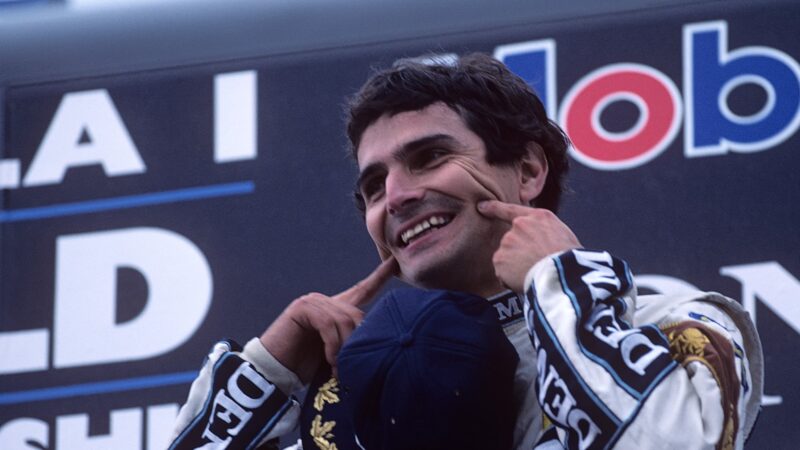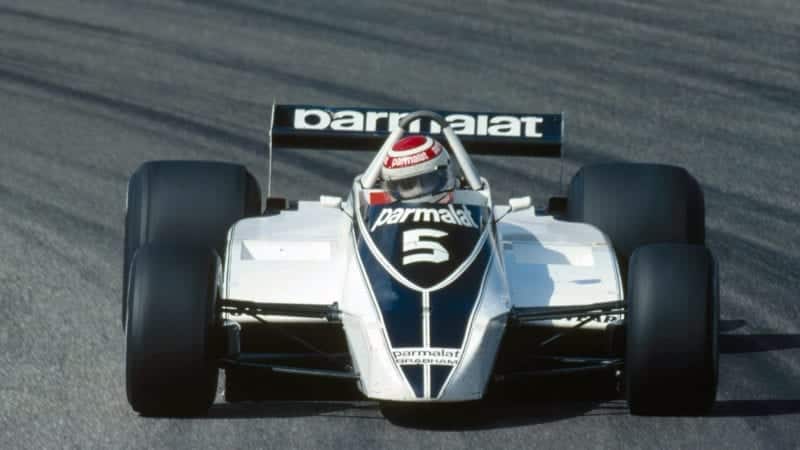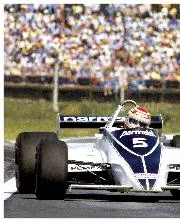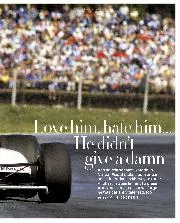The next year was sacrificed to the transition to BMW turbo power but it reaped reward when Nelson and the Brabham-BMW BT52 were the first driver/car combination to win an F1 championship with turbo power. Once again Piquet won it at the final round, in South Africa, where he overhauled Renault’s Prost.
Nobody could touch the McLaren-TAG Porsche in 1984/5 and when a switch from Michelin to Pirelli rubber rendered his Brabham even less competitive, Piquet made the move to Williams for ’86, alongside Nigel Mansell.
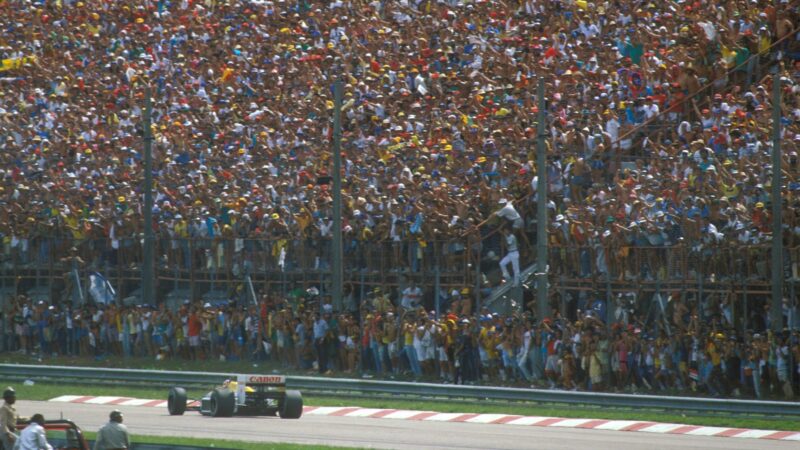
In front of a home crowd. Piquet didn’t win the 1987 Brazilian GP but took that year’s championship
Grand Prix Photo
Mansell’s competitiveness came as a shock in ’86 when the championship went down to a thrilling finale in Adelaide. Mansell’s tyre blew with 18 laps to go, just a lap after Rosberg suffered a similar failure. Williams, fearing that Nelson would suffer the same fate, pulled him in for a tyre stop. Piquet charged back to within 4sec of Prost but it wasn’t sufficient to stop Alain winning the race and the championship.
The following season, Piquet suffered a heavy concussive accident at Imola’s Tamburello corner. He later admitted that he lost significant depth perception as a result, making it difficult for him to lead a race from the front. He secretly visited a Milanese hospital every fortnight, keeping quiet in case Williams stopped him racing.
A series of early second places and three victories in Germany, Hungary and Italy set him up to take a third world championship even if Mansell took more poles and showed quicker outright pace, including during the famous Silverstone win when he clawed back a 20sec deficit to Nelson and dummied him into Stowe corner to win.
